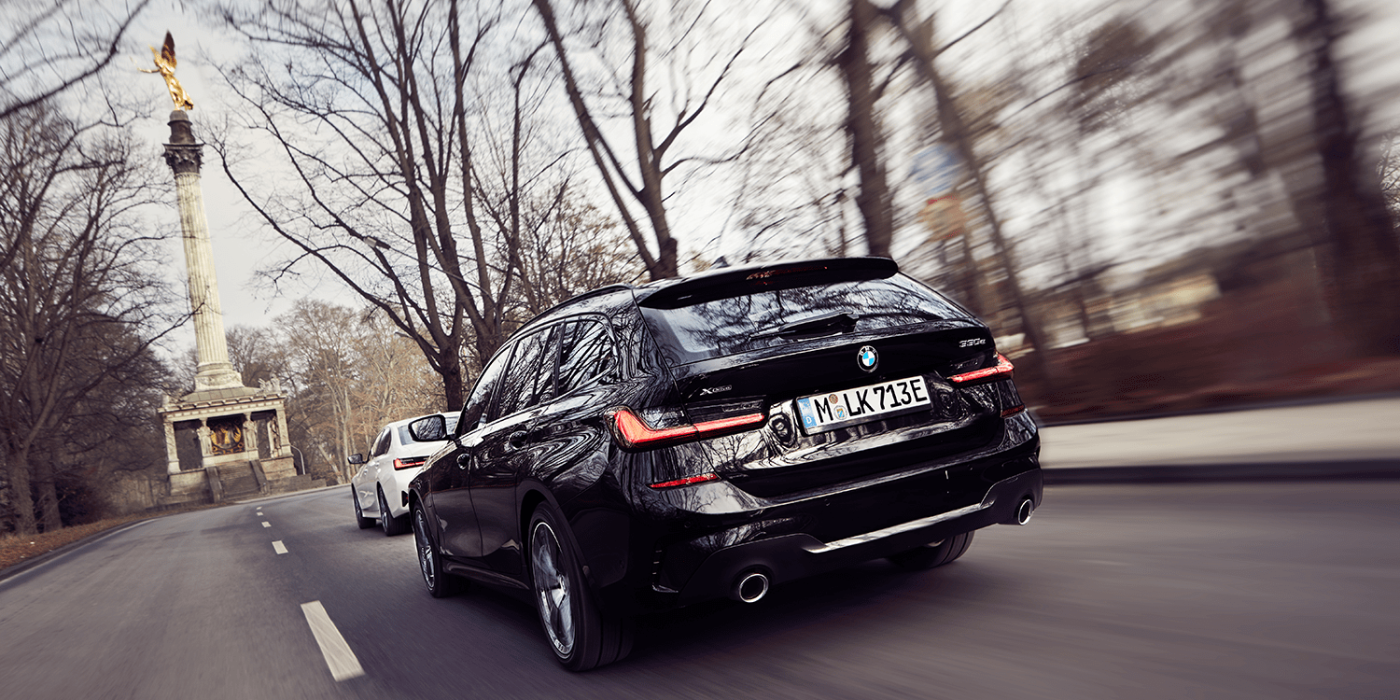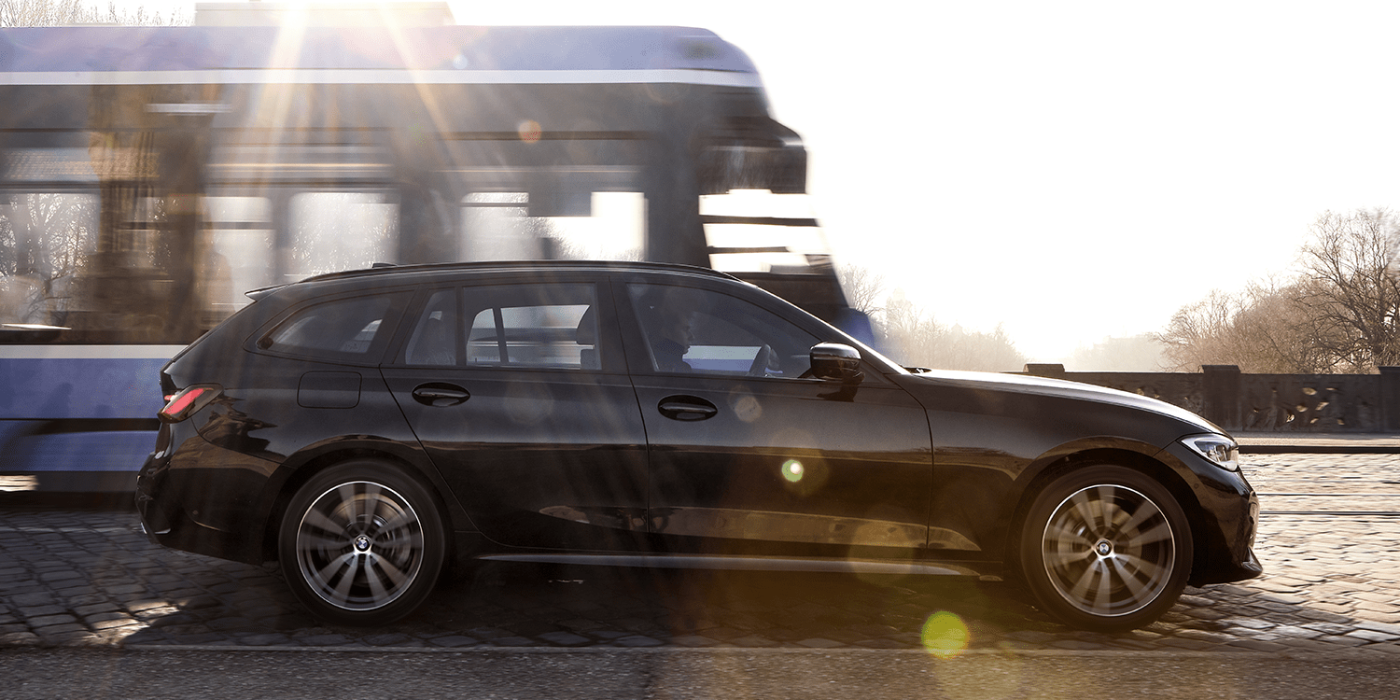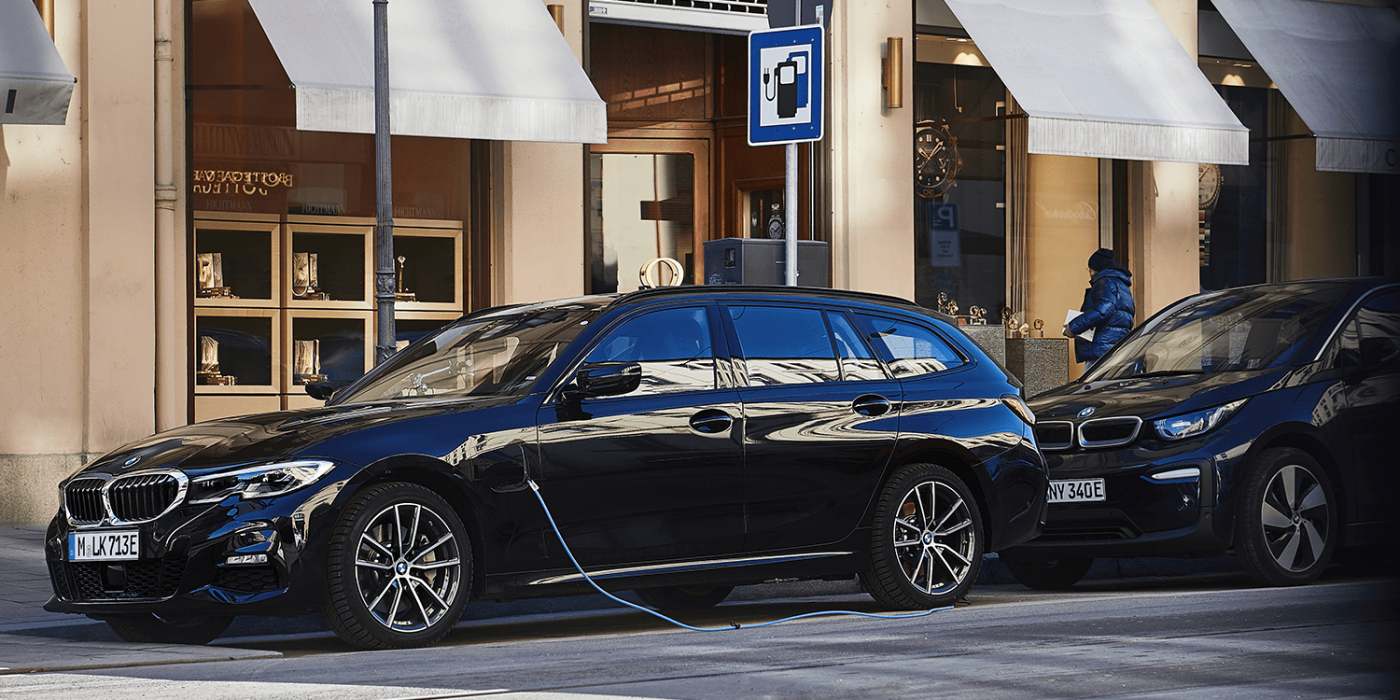BMW adds 3 new PHEVs to 3 Series
BMW is expanding the plug-in hybrid range for its 3 Series. Following the introduction of the 330e Sedan, the new 330e Touring will also be available from this summer onwards. The two four-wheel-drive PHEV variants, the 330e xDrive Sedan and the 330e xDrive Touring, will be launched in parallel.
Following on from the hybrid 330e Sedan, BMW is extending the range of vehicles with electrified drives in their 3 Series from the current one to four models. While the 330e Sedan and its estate counterpart, the 330e Touring, are equipped with classic rear-wheel drive, the second duo features BMW’s xDrive all-wheel drive. The plug-in hybrid system is the same in all four models – and the most powerful system the Munich-based company has developed to date. The company has not yet quoted prices. However, the price of the 330e Sedan should serve as a guide: BMW is quoting 51,550 euros for the basic model.
Compared to BMW’s previous partly electric vehicles, the electric range of all four models is to be increased by more than 50 per cent thanks to the new PHEV system including a new 12.0 kWh battery. In an accompanying press release, BMW mentions values between 55 and 68 kilometres. However, these are calculated back to NEDC, the electric range in the WLTP is a good 50 kilometres.
Let’s first take a closer look at the new 330e Touring: The station wagon has a 2.0-litre petrol engine onboard which produces 135 kW. This is joined by an electric motor with 83 kW integrated into the housing of the eight-speed automatic transmission. The system output adds up to 185 kW, the maximum system torque is 420 Nm. The sprint from 0 to 100 km/h should be achieved in 6.1 seconds. In hybrid mode (called “AUTO eDRIVE” by BMW) a maximum of 110 km/h is possible in electric mode, in “MAX eDRIVE” the 330e Touring can reach speeds of up to 140 km/h.
Like the 330e Sedan, the estate version also has a so-called XtraBoost. This is what BMW calls a new function that increases system performance by 30 kW to 215 kW for up to ten seconds. “The spontaneously activated XtraBoost produces a significantly more intensive acceleration experience than in a conventionally powered vehicle with comparable engine output,” says BMW, describing the function.



The 330e Touring’s battery can be recharged to 80 per cent in 4.2 hours and 100 per cent in 5.7 hours from a conventional household socket. Using a type 2 cable at a public charging station or the wallbox in the garage at home, the process is accelerated to 2.4 and 3.4 hours respectively. The charging connection is located under a separate flap on the front left side wall of the vehicle.
As far as consumption data is concerned: The standard requires the estate car to consume from 1.7 litres per 100 kilometres, while power consumption is specified as from 15.7 kWh per 100 kilometres. Since CO2 emissions are between 36 and 38 grams per kilometre in the WLTP and the range is above the limit of 40 kilometres, the car meets the requirements for reduced company car taxation in Germany.
The 330e xDrive Sedan and the 330e xDrive Touring, the two all-wheel-drive BMW 3 Series models with the same plug-in hybrid system on board, have a slightly smaller electric range than their counterparts with rear-wheel drive. The 330e xDrive Limousine sprints from 0 to 100 km/h in 5.8 seconds, while the 330e xDrive Touring has an almost identical range to the model described above with 6.2 seconds. Otherwise, the performance and consumption data are similar. In terms of fuel consumption, the four-wheel-drive models are slightly higher at 1.8 and 2 litres per 100 km, as is power consumption (from 16.7 and 17.8 respectively) and CO2 emissions (from 42 g/km and 46 g/km).
And a brief word about xDrive technology: unlike the two 330e models, the all-wheel-drive duo combines the power delivery from two engines with power transmission to all four wheels. The variable power distribution provided by the all-wheel-drive ensures maximum traction and driving stability in all road and weather conditions, the Munich-based company emphasises the advantage. It also supports sporty driving characteristics.
With reporting by Cora Werwitzke, France.

0 Comments